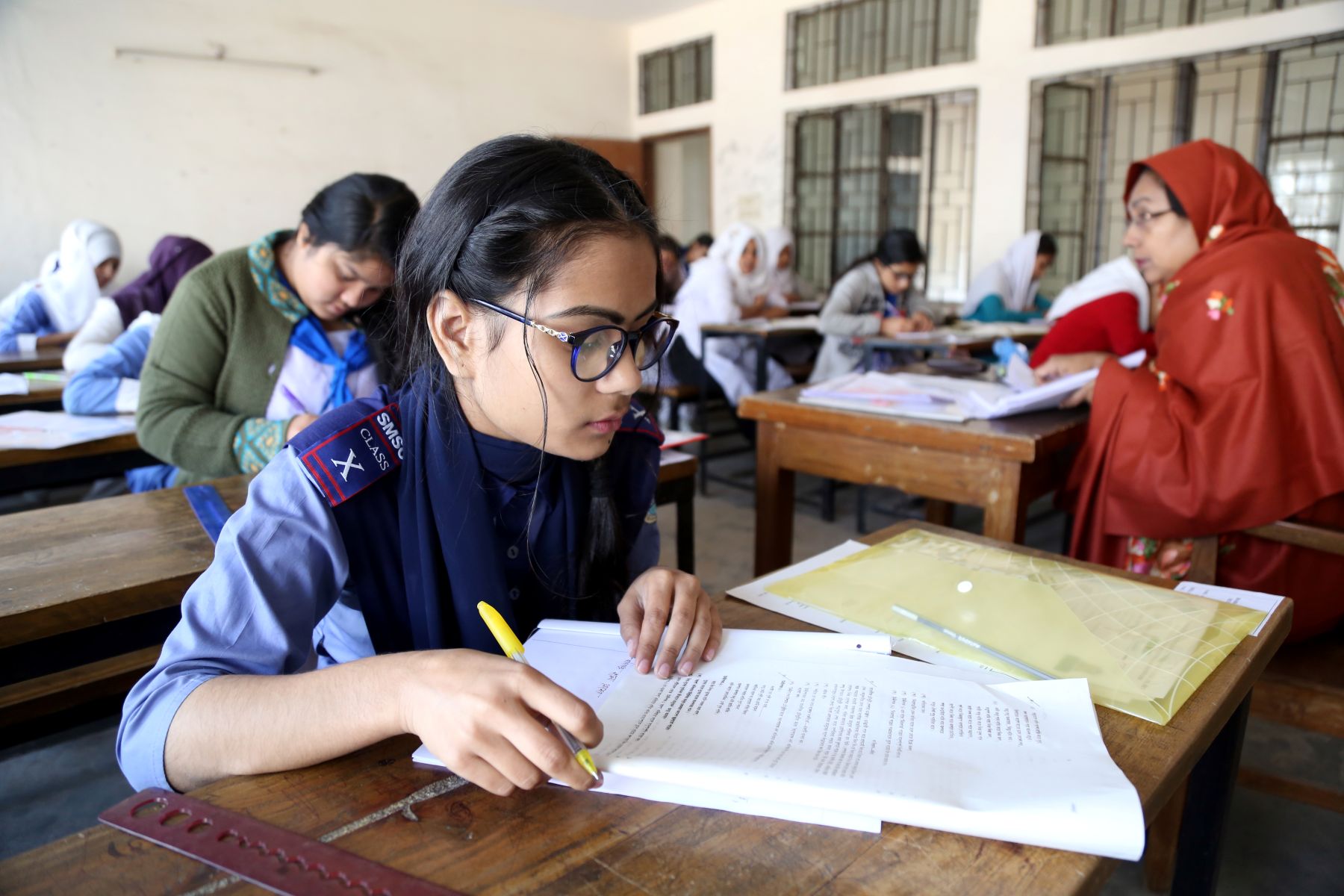Penn State remains a top higher education destination in 2025 – Penn State University

Penn State University Enrollment Report: Alignment with Sustainable Development Goals
Advancing SDG 4 (Quality Education) through Broad Access and High Demand
Penn State University’s latest enrollment data indicates a total of 86,557 students across all campuses, demonstrating its significant role in providing inclusive and equitable quality education. The University Park campus achieved a record-high residential undergraduate enrollment of 42,822 students. This reflects a strong and growing demand for quality tertiary education, further evidenced by a 10% increase in applications to an all-time high of 145,654. The institution maintains its commitment to local access, with over 62% of all undergraduates hailing from Pennsylvania, directly supporting the goal of accessible education for all.
Fostering Inclusivity in Line with SDG 10 (Reduced Inequalities)
The University has made measurable progress in reducing inequalities in access to higher education, a core target of SDG 10. This commitment is reflected in the demographic composition of its student body.
- Underrepresented Students: Overall enrollment of underrepresented minority students saw a slight increase University-wide. At the University Park campus, first-year underrepresented student enrollment increased by 5.5% over the previous year.
- First-Generation Students: Access for students who are the first in their families to attend college continues to expand, with this group now representing over 28% of first-year undergraduates across all campuses.
- Economically Disadvantaged Students: Enrollment of Pell-eligible students remains steady, ensuring that economic background is not a barrier to quality education, which also contributes to SDG 1 (No Poverty).
- Commonwealth Campuses: These campuses serve as a crucial access point for diverse populations, with student bodies comprising 78% Pennsylvania residents, 20% from underrepresented backgrounds, and 38% first-generation college students.
Supporting SDG 8 (Decent Work and Economic Growth) through Student Success
By providing students with the knowledge and skills for future employment, the University contributes directly to SDG 8. Key performance indicators highlight the institution’s effectiveness in preparing a skilled workforce.
- Graduation Rates: The data shows continued steady growth in four-year graduation rates.
- Retention Rates: Student retention rates after one, two, and three years remain consistent, indicating a stable and supportive educational environment that fosters student success.
Enrollment Trends and Strategic Outlook
While overall demand remains high, the report notes several enrollment challenges reflective of national higher education trends. These figures provide a basis for strategic planning to ensure long-term sustainability and continued alignment with the Sustainable Development Goals.
- A 1.6% decline in University-wide enrollment was recorded.
- Enrollment across the 20 Commonwealth Campuses decreased by 5.8%.
- Graduate student enrollment declined by 3.2%, with over 75% of this reduction attributed to a decrease in international students.
Conversely, enrollment at Penn State World Campus saw a slight increase, driven by new undergraduate students. This trend reflects a growing preference for online learning modalities, which can further enhance access to education in line with SDG 4.
1. Which SDGs are addressed or connected to the issues highlighted in the article?
The article on Penn State’s enrollment statistics connects to several Sustainable Development Goals (SDGs), primarily focusing on education, equality, and economic opportunity. The following SDGs are addressed:
-
SDG 4: Quality Education
This is the most central SDG in the article. The entire text discusses access to, and participation in, higher education. It details enrollment numbers, student demographics, and the university’s commitment to providing a “world-class education” and an “exceptional educational environment” that prepares students for their careers.
-
SDG 10: Reduced Inequalities
The article addresses this goal by highlighting the university’s efforts to provide access to higher education for specific demographic groups. It explicitly mentions enrollment data for “underrepresented backgrounds,” “first-generation college students,” and “Pell-eligible students,” demonstrating a focus on ensuring educational opportunities are available to diverse and historically disadvantaged populations.
-
SDG 8: Decent Work and Economic Growth
This goal is connected through the stated outcomes of the education provided. The article notes that Penn State’s offerings “foster students’ drive for success and position them for rewarding careers” and give them “the skills and knowledge to achieve their greatest ambitions.” By educating a large student body, the university contributes to developing a skilled workforce, which is essential for economic growth.
2. What specific targets under those SDGs can be identified based on the article’s content?
SDG 4: Quality Education
-
Target 4.3: By 2030, ensure equal access for all women and men to affordable and quality technical, vocational and tertiary education, including university.
The article directly relates to this target by discussing university enrollment. It highlights the role of Penn State’s Commonwealth Campuses as a “crucial access point” and notes the growth of its online World Campus, both of which expand access. The focus on enrolling students from “underrepresented backgrounds,” “first-generation” families, and those who are “Pell-eligible” underscores the commitment to equal access.
-
Target 4.4: By 2030, substantially increase the number of youth and adults who have relevant skills, including technical and vocational skills, for employment, decent jobs and entrepreneurship.
This target is addressed by the article’s statement that the university provides “expansive academic offerings and experiential learning opportunities that foster students’ drive for success and position them for rewarding careers.” This implies that the education provided is directly aimed at equipping students with skills relevant to the job market.
SDG 10: Reduced Inequalities
-
Target 10.2: By 2030, empower and promote the social, economic and political inclusion of all, irrespective of age, sex, disability, race, ethnicity, origin, religion or economic or other status.
The article’s emphasis on increasing enrollment for specific groups directly supports this target. By tracking and reporting on the “slight increase in overall enrollment of underrepresented minority students,” the “continued increase in first-generation student enrollment,” and the “steady enrollment of Pell-eligible students,” the university demonstrates its role in promoting the social and economic inclusion of these groups through higher education.
SDG 8: Decent Work and Economic Growth
-
Target 8.6: By 2020, substantially reduce the proportion of youth not in employment, education or training.
Although the 2020 deadline has passed, the principle remains relevant. By enrolling 86,557 students, Penn State is actively keeping a large population of young people in education and training, directly reducing the proportion of youth who are not in employment, education, or training (NEET). The mention of “steady growth in four-year graduation rates” further indicates successful progression towards employment.
3. Are there any indicators mentioned or implied in the article that can be used to measure progress towards the identified targets?
Yes, the article provides several quantitative and qualitative data points that can serve as indicators for the identified targets.
For Target 4.3 (Equal access to tertiary education):
- Overall Participation Rate: The total enrollment figure of “86,557 students” serves as a primary indicator of participation in tertiary education.
-
Participation of Underrepresented Groups: The article provides specific data points to measure access for different groups:
- “20% [of Commonwealth Campus students] are from underrepresented backgrounds.”
- “A 5.5% increase in first-year underrepresented student enrollment over last year” at University Park.
-
Participation of First-Generation Students: Progress is measured by the statistics provided:
- “more than 38% [of Commonwealth Campus students] are first-generation college students.”
- “more than 28% of first-year undergraduate students across Penn State’s campuses being the first in their families to attend college.”
- Participation of Students from Lower-Income Backgrounds: The “steady enrollment of Pell-eligible students” is a direct indicator of access for students with financial need.
For Target 4.4 (Increase in youth with relevant skills for employment):
- Completion/Graduation Rate: The mention of “continued steady growth in four-year graduation rates” is a key indicator of students successfully completing their education and acquiring skills.
- Student Retention Rate: The article notes “steady retention rates,” which indicates the university’s success in keeping students enrolled and on track to graduate, thereby gaining relevant skills.
For Target 10.2 (Promote social and economic inclusion):
- Proportion of Specific Groups in Education: The same indicators used for Target 4.3 serve to measure inclusion. The percentages and growth numbers for “underrepresented minority students,” “first-generation college students,” and “Pell-eligible students” directly reflect the level of inclusion of these groups within the university system.
4. Table of SDGs, Targets, and Indicators
| SDGs | Targets | Indicators |
|---|---|---|
SDG 4: Quality Education |
Target 4.3: Ensure equal access for all to affordable and quality tertiary education, including university. |
|
| Target 4.4: Substantially increase the number of youth and adults who have relevant skills for employment. |
|
|
SDG 10: Reduced Inequalities |
Target 10.2: Empower and promote the social, economic, and political inclusion of all. |
|
SDG 8: Decent Work and Economic Growth |
Target 8.6: Substantially reduce the proportion of youth not in employment, education or training. |
|
Source: psu.edu
What is Your Reaction?
 Like
0
Like
0
 Dislike
0
Dislike
0
 Love
0
Love
0
 Funny
0
Funny
0
 Angry
0
Angry
0
 Sad
0
Sad
0
 Wow
0
Wow
0













































































